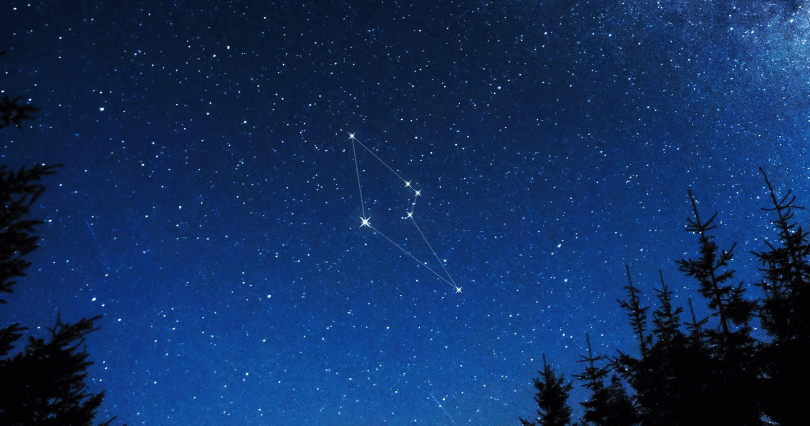Reticulum Constellation

Reticulum constellation is one of the smallest constellations in the southern hemisphere, located between Dorado, Horologium and Hydrus constellations. The brightest star is called Alpha Reticuli with a magnitude of 3.0. The best time to look for it is during culmination in winter times. The constellation was not known to Ptolemy and was first introduced in the 18th century by astronomer de Lacaille. He named some of the constellations in the southern sky that were not named before, and he didn’t want to name them after animals or mythological creatures, and used the technological novelties for its names instead. The name Reticulum means ‘small net’ or ‘the reticle’ in Latin. De Lacaille used to measure the angular distances of the stars and their positions. The constellation existed 100 years before de Lacaille and was depicted by Habrecht II who called it Rhombus, but de Lacaille changed its name later on.
How to find Reticulum constellation in the night sky?
The reticulum is 82nd constellation in the world in size, occupying and it is set in the first quadrant of the southern hemisphere. The constellation is visible to all observers at latitudes between +23° and -90° and is bordered by Dorado, Hydrus and Horologium constellations. The reticulum is a member of the Lacaille constellations along with Antlia, Caelum, Circinus, Fornax, Horologium, Mensa, Microscopium, Norma, Octans, Pictor, Sculptor, and Telescopium.
Major stars in Reticulum constellation
This constellation is home to only two important deep sky objects: the barred spiral galaxy NGC 1559 and the Topsy Turvy Galaxy. It contains only 5 stars with its known planets and there aren’t any meteor showers or Messier objects associated with it. The brightest star of Reticulum is Alpha Reticuli with 3rd magnitude. The star is 161.6 light-years distant from the solar system and it is said to be 240 times more luminous than the actual Sun. List of important stars in Reticulum constellation:
-
α Reticuli (Alpha Reticuli)
-
β Reticuli (Beta Reticuli)
-
ε Reticuli (Epsilon Reticuli)
-
γ Reticuli (Gamma Reticuli)
-
δ Reticuli (Delta Reticuli)
-
κ Reticuli (Kappa Reticuli)
-
ι Reticuli (Iota Reticuli)
-
η Reticuli (Eta Reticuli)
-
θ Reticuli (Theta Reticuli)
-
R Reticuli (S Reticuli)
-
HD 23079, HD 25171, HD 23127 and HD 27894
-
ζ Reticuli (Zeta Reticuli)
Mythology of the Reticulum Constellation
Due to the fact this constellation was recently discovered, it was not connected with any Greek or Roman myths and tails. The reason for that is that Ptolemy was not able to see the constellations located in the southern hemisphere, and he, therefore, didn’t list this one in his 48 then-known constellations. Reticulum constellation was first depicted by the astronomer from Germany called Isaac Habrecht II in the 17th century by the name Rhombus. Lacaille, a famous French astronomer, was the one who introduced the constellation le Réticule Rhomboide, or Reticulum. He named the constellation after the reticle in his telescope, which he used to measure star positions during his journey in the mid-18th century. The constellation is now officially accepted by International Astronomical Union and listed as one of the 88 modern-known constellations. The constellation could not be spotted without binoculars or a telescope, due to its size and brightness of its stars.
Choose your package
-
Lifetime Entry in Star Catalog
-
Guaranteed visible from your location
-
Star Finder app access


-
Free & express shipping available
-
PDF Emailed in Seconds
-
Everything from a Standard Star package
-
Choose a Star Constellation
-
Easier to find in the Sky




-
Free & express shipping available
-
PDF Emailed in Seconds
-
Everything from a Standard Star package
-
Name Two Stars together
-
Extra bright and Unique 2-Star Pair






-
Free & express shipping available
-
PDF Emailed in Seconds



